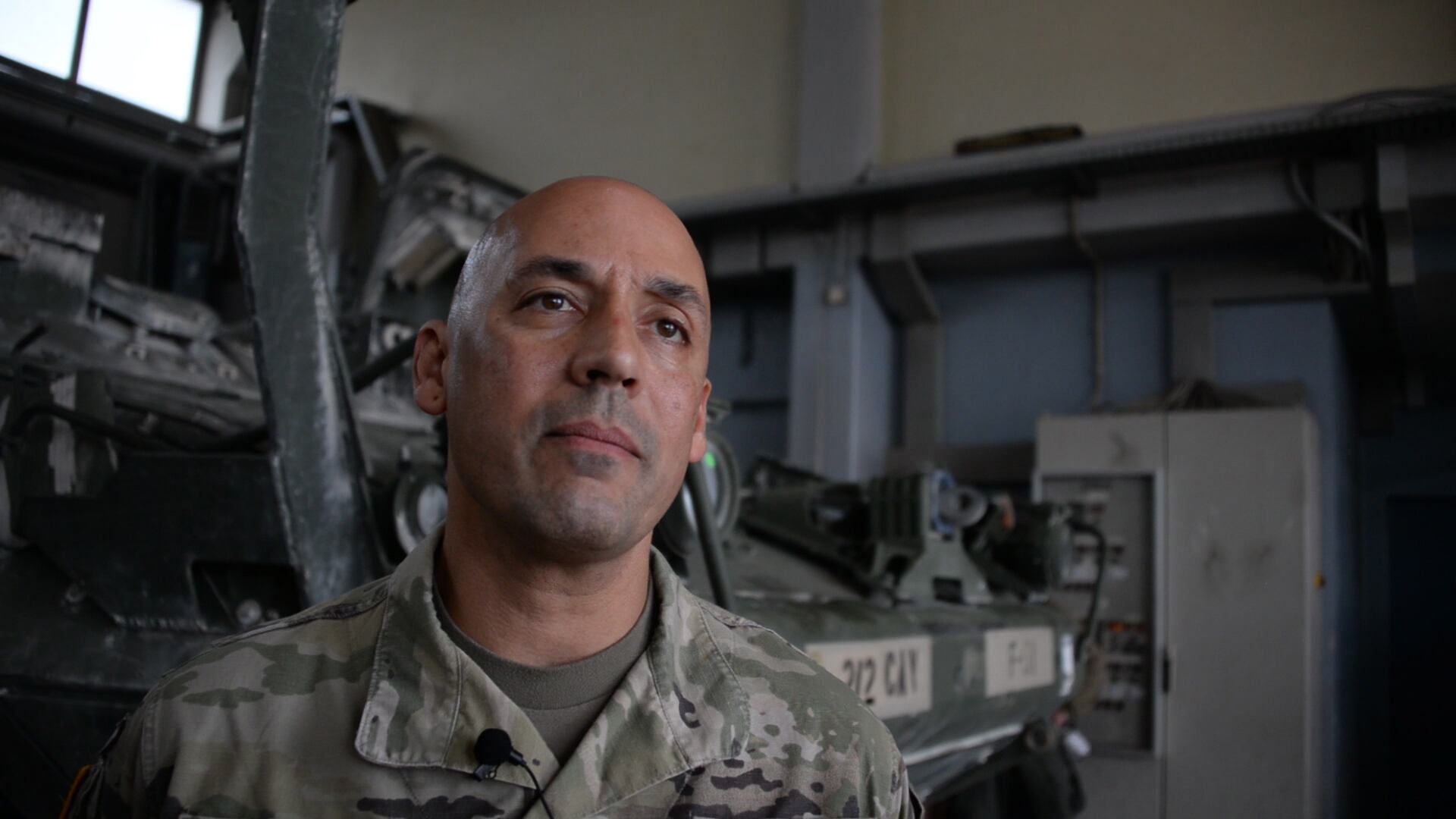WASHINGTON — The U.S. Army is opening a new office and laboratory to develop agile position, navigation and timing solutions in an attempt to reduce soldiers' dependence on GPS.
“We are standing up a new product office called PNT Modernization. So this will be the newest PM shop in the Army,” said Col. Nickolas Kioutas, program manager for position, navigation and timing within the Army’s Program Executive Office Intelligence, Electronic Warfare and Sensors.
The Army is keen to develop and deploy solutions that can keep soldiers operating in areas where the GPS signal has been denied, degraded or spoofed. The PNT Modernization Office — which will open Oct. 8 — will lead the Army’s efforts to develop solutions using an open-systems architecture.
RELATED

As it stands up, the PNT Modernization Office will launch a new Open Innovation Lab, a space where commercial entities can work with the Army to develop PNT solutions. Within OIL, the Army has set aside space for the CMOSS [C4ISR/EW Modular Open Suite of Standards] Lab and the Network Cross-Functional Team’s Orion Forge. Located at Aberdeen Proving Ground in Maryland, the lab will be physically separated from the more classified areas of the site to encourage more engagement with industry, said Kioutas.
“We’re opening the doors, so to speak, for being a host of vendors — anyone smart on the technologies that we’re looking at,” he said. “And we’re looking at a whole host of technologies.”
Those technologies include radio frequency systems, GPS, Alt-Nav, chip-scale atomic clocks, other timing technologies and celestial navigation, among others. The point is to break the Army’s dependency on GPS. Most importantly, these technologies need to be fielded fast, so rather than spending a decade developing technologies that are meant to last 20 years, the Army wants to release new solutions every five years, ensuring soldiers can always overmatch adversaries' capabilities.
“We’re looking at a continual rolling upgrade of our technologies,” Kioutas said.
“It’s all about getting our agile-iterations-speed-of-technology development up,” he explained. “We’ve got threats out there that we are trying to pace — to keep ahead of these threats or outpace them — so we need industry’s help to keep inventing new technologies in order to maintain that speed of relevance.”
Of course, implementing that vision isn’t easy. Take for example the Army’s Mounted Assured Position Navigation and Timing System. While a version of that technology could help war fighters continue operating in GPS-denied environments, installing it on existing platforms has proven difficult.
“It can take two or three years to even take what we’ve got and implement it onto different weapon systems platforms such as Bradley [Fighting Vehicles] or Abrams tanks,” Kioutas said.
That’s too slow for the service. Instead of having to custom install each capability upgrade, the Army wants a plug-and-play system that allows it to quickly and easily install the latest capabilities. The key technology at the center of that effort is the C4ISR/EW Modular Open Suite of Standards, or CMOSS.
With CMOSS, the Army is building a common bus or chassis that can be installed on Army systems. In turn, this box hosts a variety of cards that are plugged in to provide different capabilities. Now, instead of replacing the whole box every time the Army wants to upgrade a capability, all it needs to do is swap out the relevant cards.
The Army recently tested the CMOSS capability at White Sands Missile Range in New Mexico. The CMOSS chassis was installed on a Stryker vehicle with a PNT card and an integrated anti-jam antenna. While the Army is still assessing that test, Kioutas said so far it appears to have performed as expected.
Industry partners will work within the Army’s recently released PNT reference architecture and other open standards to develop solutions that are compatible with CMOSS cards and this plug-and-play approach, said Kioutas.
“We’re going to enter an environment where it’s not a one-vender-take-all environment. We’re gonna open it up to all kinds of industry to allow us to really take the best-of-breed technologies and optimize solutions on whatever cards we develop,” he said. “We’ll leverage whatever industry brings.
“The Army never wants to fail another program. Failure in the past happened because it took 10, 15 years to get the capability out. By the time it got out, it was failed technology and the soldiers maybe didn’t like it.”
The PNT Modernization Office will launch a new website Oct. 29, with an industry day slated for Nov. 17.
Nathan Strout covers space, unmanned and intelligence systems for C4ISRNET.








